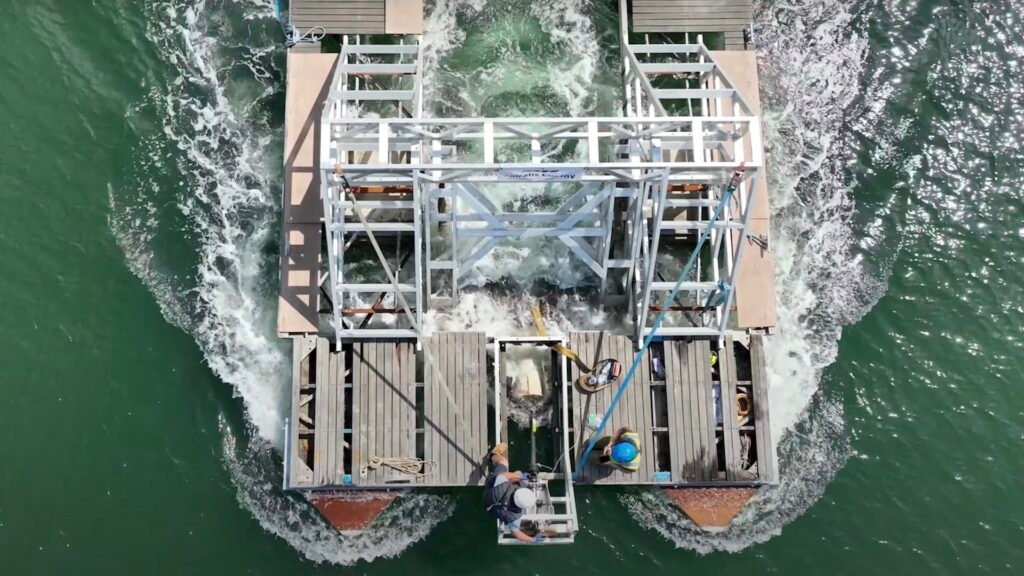
Photo credit: Spiralis Energy
According to an article in Interesting Engineering, London-based startup Spiralis Energy has proposed using “screw-type” tidal turbines for Alderney, an island in the English Channel between France and the UK.
This was in response to a call from the local government’s Energy Working Group which invited proposals from companies working on tidal energy – the process of harnessing energy from the natural ebb and flow of the tides caused by gravitational interactions between the Earth, Sun and Moon.
“We have the potential to produce renewable energy from solar, wind, tidal and wave resources, and we are now opening up the possibilities offered by our abundant tidal resources in addition to advancing solar and wind options,” Energy Working Group leader Bill Abel explained in a press release.
The group estimates that the region has tidal power potential that could generate up to 3 gigawatts of electricity, freeing the island region from reliance on imported polluting fuels, reducing carbon emissions and expanding clean energy infrastructure.
According to a report by Offshore Energy, one study found that tidal energy could add around 11.5 gigawatts of energy to the UK power grid, equivalent to about 11% of electricity demand.
Spiralis has already tested a prototype and will be installing two 66-foot-long axial skelter screw generators off the coast of Alderney. As detailed in the report, these will be the first attempts to measure tidal currents in the region, primarily during the cold winter months.
The company’s technology mimics the Archimedes’ screw concept, but works in reverse as water flows through the screw, spinning the device to generate electricity. What makes the company’s technology unique is that it adds airfoils to the screw to increase torque and boost energy output. So far, the company claims to have achieved 500 kilowatts when the tidal current was 3.5 meters per second.
What’s more, Axial Skelter is made from recycled plastics and is fully modular: parts can be 3D printed and shipped as kits and assembled on-site, and broken parts can even be melted down and reused to print out replacements.
Other energy companies frequently use tidal turbines, which have propeller mechanisms to harvest energy from currents. Scotland’s Orbital Marine Power has used the design to generate 2 megawatts of electricity at a facility in the Orkney Islands, off the country’s north coast.
Another group is testing a propeller-type design in the fast currents off the coast of the Philippines, helping to wean the region off its reliance on diesel fuel.
Archimedes screw hydro turbines are relatively new to the field, though the concept has been around for about a decade. According to RenewablesFirst, the largest screw hydro generators can produce 500 kilowatts of power, matching Spiralis’ claims.
Working in the tidal energy industry is challenging, but the Spiralis team believes in their technology and industry knowledge. They continue to raise capital with the goal of building a complete tidal energy array by 2025.
Sign up for our free newsletter for weekly updates on cool innovations Improving Lives and Save the planet.

